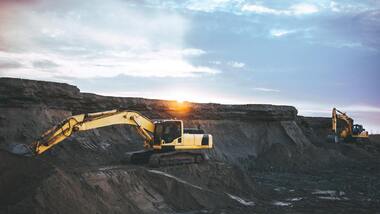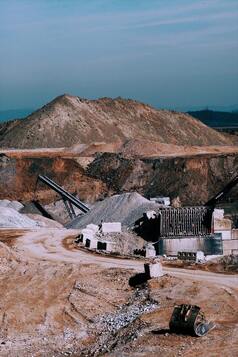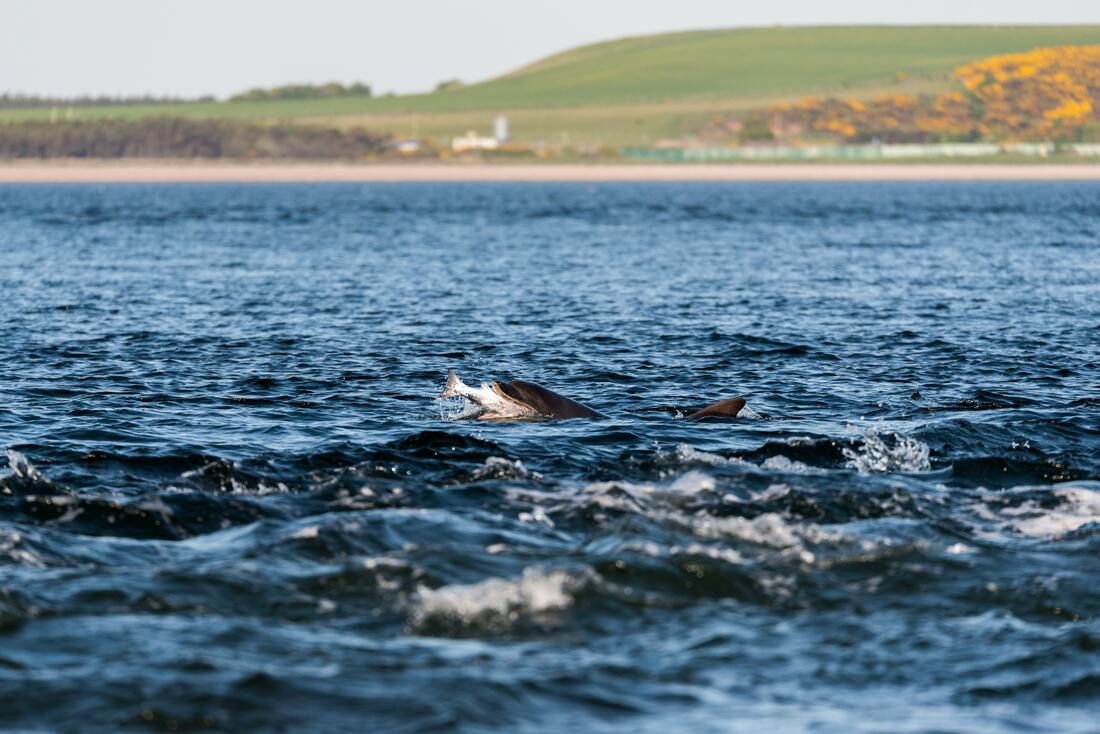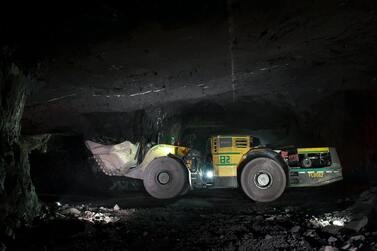 Mining via Unsplash (Korshunov) Mining via Unsplash (Korshunov) Mining sites have considerably increased in number worldwide with the high demand for valuable minerals and geological materials. The non-renewable products are mined on large-scale that cannot be fabricated artificially. These naturally exhaustible resources are now an everyday commodity. We interact with minerals, including the calcite from our toothpaste, phosphate in fertilizer, gold and diamonds in our jewels, copper in wires, and plastics from fossil fuels. The mine project, Pebble Mine, is aimed at the extraction of precious metals like gold and toxic metals like copper. Copper is of real concern, since it is widely used in wiring, electric appliances, medical instruments, solar panels, wind turbines, and various other infrastructure developments. However, it is not the only mineral that is extracted in the United States. The U.S.A is a resource-rich country, but the resource proportion varies among states. Alabama is rich in fossil fuel resources while California’s prime resources are sand and gravel. Among the topmost extracted minerals are feldspar for the glass and ceramic industry, Lithium from brine operation, and Silver and Gold for their prime importance as coins and jewelry as well as in electronics. The more the world develops, the more the resources that are extracted. The “Environmental Legacy” of the Mining Operations Before we get deeper into the Pebble Mine fiasco, let’s dive into the impacts of the mining first. Various adverse environmental impacts bulge out of the mining operations as exploration, construction, operation, maintenance, and abandonment. Habitat modification is the primary concern for native biodiversity (flora and fauna). Billions of tons of mine waste and tailing are produced while concentrating a small fraction of ore. The transportation of metal or minerals and mine tailing--a watery mixture of sand and clay--is another problem. This has detrimental effects on the surrounding water resources, vegetation, and population. The cross-cutting environmental effects from mining operation are as follows;
Each year about 20,000 people lose their life due to mining operations for various reasons. That is why mining companies are required to follow environmental standards to avoid, reduce, control, or compensate for environmental impacts. This ensures that the company keeps a check on the number of contaminants being discharged, on habitat destroyed and wildlife displaced, and can thereby develop a compensatory mitigation plan. Let’s now take a closer look at the most bruited-about mining project of the U.S. This would help us better understand the importance of considering potential socio-economic and ecological impacts of copper-molybdenum-gold mining. Case Study: The Pebble Mine Project Pebbles via Unsplash (Dickens) Pebbles via Unsplash (Dickens) In November of 2020, a monumental mining operation called the Pebble Limited Partnership (PLP), received word that their proposal was denied. The Canadian-based parent company, Northern Dynasty Minerals Ltd., seeks access to the world’s largest untapped resources of copper and gold in the undisturbed swath of Alaska. The deposits are present under two rivers; Nushagak River and Koktuli River, that drain into Bristol Bay. The pristine ecosystem of Bristol Bay is the spawning ground for the world’s most productive five Pacific salmon species. The natural population of sockeye at Bristol Bay provides about half of the world’s sockeye, worth $1.5 billion in the world market. The project, as proposed, was fraught with peril. The Pebble Mine could have directly affected about 1300 hectares of wetlands and 81 miles of salmon streams in Koktuli River Watershed by polluting waters, destroying the fish industry thereby un-employing about 14,000 Americans. The remaining hectare of dewatered, fragmented habitat is another number. The sockeye salmon can be listed as river-type or lake-type. The river-type sockeye is considered the “seed source” for evolutionary evidence. The dominant lake-type is thought to have evolved from the former ones. A 2010 ecological study concluded that the proposed mine is of significant concern for the abundance and sustainability of river-type salmon Not only that, the project required the construction of the transportation corridor to carry the mineral concentrate, tailing storage and water treatment facilities, and natural gas pipeline and power plant, and other mine facilities. The mine was proposed to be operating for 20 years. About 180,000 tons of rocks are blasted and crushed each day, and the minerals are chemically concentrated from that. The concentrate is then be transported about 30 miles to the port across Lake Iliamna, and farther to the port at Amakdedori. This would have seriously degraded the environment; disrupting wildlife, unchecked access to previously uncharted deposits of gold and copper, and the risk of accidental oil spills and metal tailing. Metals like copper are toxic to salmon, the backbone of the community. The PLP was confident that the Pebble Mine's effects on the river salmon population were minimal, and that the Wetland Mitigation Plan would avert the negative environmental impacts. Petition Against Pebble Mine, EIA, & USACE StatementThe petition against the project was signed by six of Alaska’s Native Tribes in Bristol Bay who have been living there for millennia. Later 80 percent of the Alaskan natives, salmon-based fishermen community, famed Jewelers like Tiffany and co, various other groups who depend on the fishery for livelihood, and environmental groups as Bristol Bay Native Corporation (BBNC) also voiced opposition to the mine. Major investors also walked away from the proposal because of its environmental impacts The petition was reviewed by the U.S Environmental Protection Agency (US-EPA) under section 404(c) of the Clean Water Act in 2014. The agency studied the effects of pebble mining on the watershed. This section empowers EPA to prohibit, restrict, or even deny the waste discharge in waters of the United States that have knock-on resources like fishery, wildlife, water supplies, and even for natural beauty. The former EPA director says, “the agency highlighted the potentially harmful impacts of pebble mine on the fishery in Bristol Bay after three-year-long peer-review study”. The application was submitted to the U.S Army Corps of Engineers (USACE), the agency in charge of the permit in January, 2018. USACE released a draft EIS in February 2019 that overlooked the potentially harmful consequences of the Pebble Mine. Despite the massive support from the Alaskan community, environmentalists, and republicans; the Trump administration withdrew the protections in July 2019.  Mining Site via Unsplash (Hellmann) Mining Site via Unsplash (Hellmann) In the final revision of the mitigation plan, the company proposed to preserve an undisturbed habitat outside the Pebble Mine for 99 years. Nevertheless, the mitigation plan of the company was not compliant with environmental standards. Also, the authorities had gravely underestimated the downstream effects of the pebble mine on the watershed and fisheries in Bristol Bay. To make up for the lost genetic diversity, natural habitat, wetlands and streams, and thousands of year-old cultural traditions, the company aimed for the preservation of 45,000 hectares of undisturbed habitat nearby. Tapes were released from recorded meetings disclosed that Northern Dynasty Minerals’ executives affirm its investors about the expansion of the project beyond its proposal for another 180 years. “Who would want a production like that to cease?” exclaims the company’s Chief of Mine Operations. The U.S Army Corps of Engineers (USACE) released the Final Environmental Impact Statement (FEIS) focused on a 20-year proposal. USACE denied the permit on November 25, 2020, for “controversial” shortcomings. The decision is consistent with the former U.S. EPA determination released under the Obama administration. The project, as proposed, would cause “unavoidable adverse impacts” on the surrounding environment. It is “non-compliant” with the “Clean Water Act”, USACE remarks. The proposal lacks the mitigation plan for the damage from infrastructure development and the clause that “it would foster the development of new mines,” poses an unavoidable risk to the environment. The denial was celebrated countrywide. It is a victory for the native Alaskan community; which has cultural ties with Bristol Bay and depends on the fishery for livelihood. Though the PLP would challenge the USACE decision; the former EPA Director is optimistic that the decision will hold. Although this mining battle is over, it is not the only one to be aware of in America or worldwide. There are more proposals reaching the surface that could threaten the environment everyday. These include the La Colosa Gold Project, Columbia, the Pascua-Lama Gold-Silver Project, Argentina/Chile, and the Cerro Colorado Copper Mine, Chile to name a few. The mentioned are on halt by court orders for environmental permit violations. Bio-Remediation of Mine TailingsIt is now a well-established fact that the mine tailings pose a serious threat to environment and human health. The annual discharge of this metal-rich mixture exceeds 10 billion worldwide. The poor infrastructure of tailing-dams has also resulted in catastrophic disasters, i.e. a dam burst at Buffalo Mine, West Virginia in 1972. The discharge has implications on the ecosystem, but it can be mitigated easily employing remediation techniques that include;
The efficient and inexpensive solution for the mitigation of diffusely polluted soil and surface/groundwater contamination is hidden in Phyto-remediation. The plants help ameliorate the environment in three ways; phyto-extraction, phytostabilization, and phytovolatilization. Phyto-remediation not only removes the contaminants but also provides stability to soil and enhance biomass. Greater attention is focused on native plants that are better adapted to local conditions and more tolerant to high-levels of metal toxicity. Recovery of valuable resources from the mine tailings is becoming more economically viable these days. Vale, a Brazilian mining company in collaboration with the University of Sao Paulo, is working on metal recovery using micro-organisms. The research is aimed to recover 0.07% of the valued copper from mine tailings using copper-eating bacteria. If successful, the research would revolutionize the metal extraction and handling of metal tailings. Some countries, like Sweden, that are committed to the Paris Agreement are also introducing Fossil-free reforms in mining industries as well. Along with a ban on fossil-fuel power generation and fossil-fueled cars, Sweden is now en-route to develop fossil-free steelmaking and recycling the mine waste into fertilizers. The clean and green mining operations are achievable in 21st century. It only needs effective policy framework and stringent environmental regulations to keep the environmental impacts from mining discharge in check. AuthorNida Riaz is a freelance blogger based in Pakistan. She started writing about her passion for the environment when the world came to a stop in early 2020.
6 Comments
10/18/2022 02:42:26 pm
article has a complete data with nice info.good work keep it up and collect much more data.
Reply
Nida Riaz
8/31/2023 11:09:46 pm
Hey, I'm glad you found it helpful. Thank you for your input - it's really appreciated! Have a good day! ♥️
Reply
10/19/2022 07:12:09 am
The construction of various mine facilities that pose a serious threat to the habitat and endemic species. Mining have poisoned fish species by the bioaccumulation of the contaminant in Red River, Thank you for the beautiful post!
Reply
Nida Riaz
8/31/2023 11:10:42 pm
Hey, Thank you for adding value to the post!
Reply
6/16/2023 06:26:04 am
Great article! Please continue sharing such valuable information. If you require professional services, be sure to visit
Reply
Nida Riaz
8/31/2023 11:11:19 pm
Sure thing! Thank you for your kind words.
Reply
Leave a Reply. |
|
|
(833) CMS-LINE
(833) 267-5463 PO Box 13477 Mill Creek, Wa, 98082 © Conservation Made Simple. All rights reserved.
501(c)(3) Non-Profit, Tax ID#: 82-1646340 Copyright © 2021 Conservation Made Simple |


